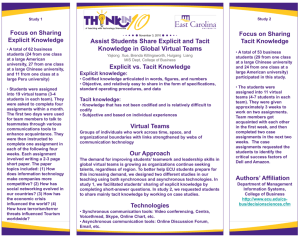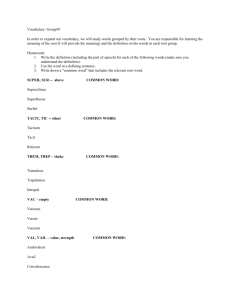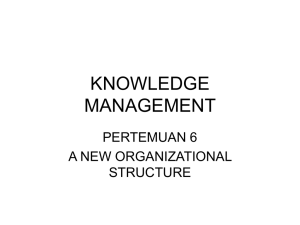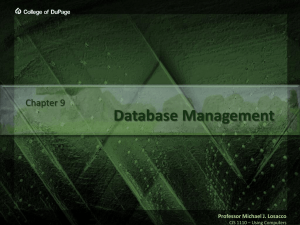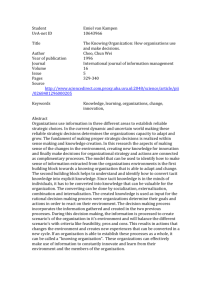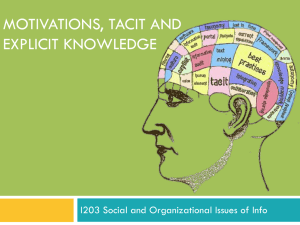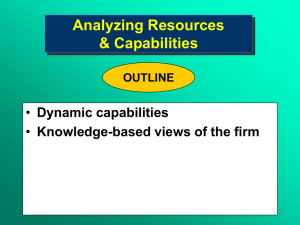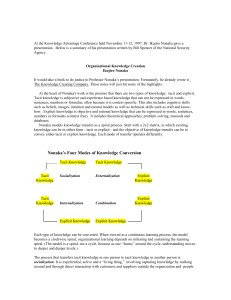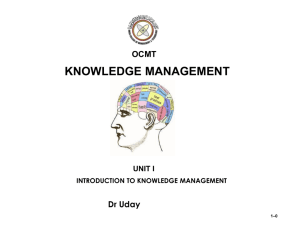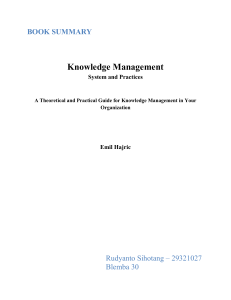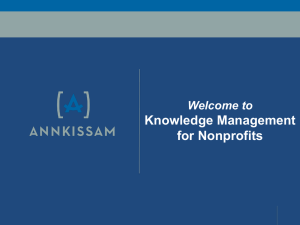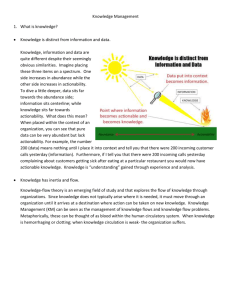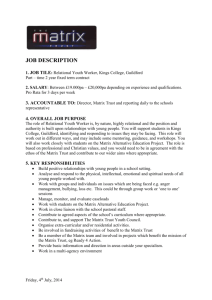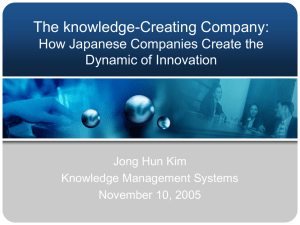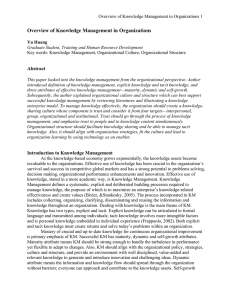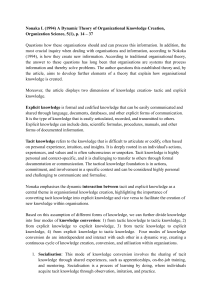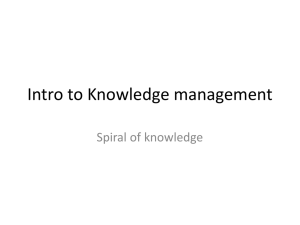Prospering in Dynamically-Competitive Environments
advertisement
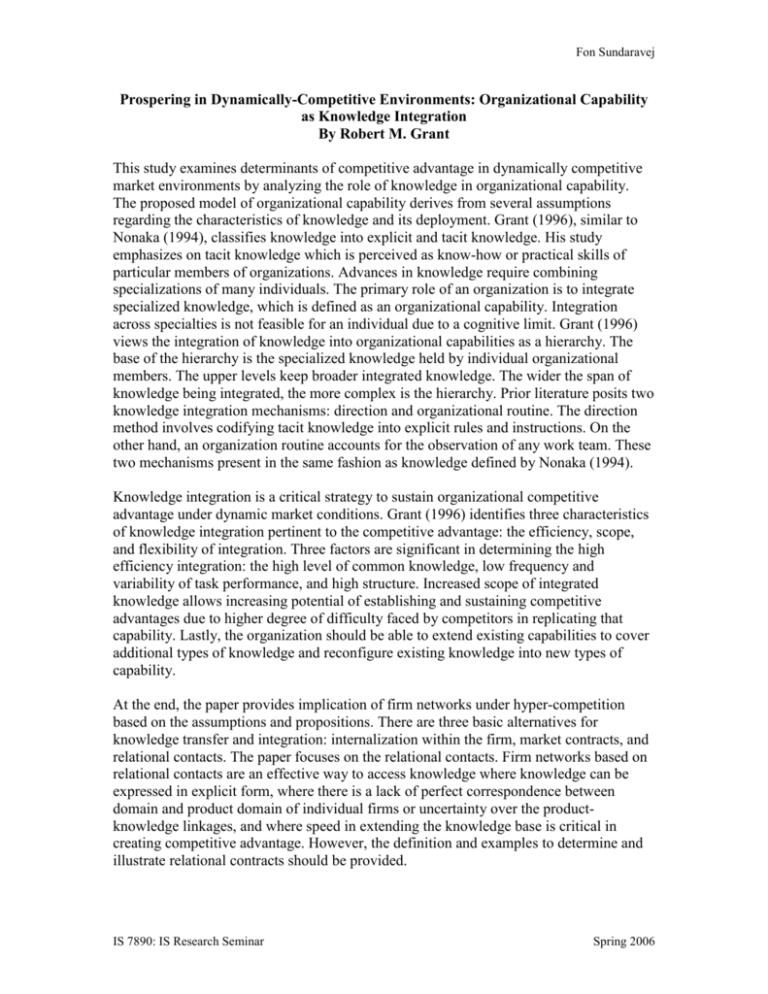
Fon Sundaravej Prospering in Dynamically-Competitive Environments: Organizational Capability as Knowledge Integration By Robert M. Grant This study examines determinants of competitive advantage in dynamically competitive market environments by analyzing the role of knowledge in organizational capability. The proposed model of organizational capability derives from several assumptions regarding the characteristics of knowledge and its deployment. Grant (1996), similar to Nonaka (1994), classifies knowledge into explicit and tacit knowledge. His study emphasizes on tacit knowledge which is perceived as know-how or practical skills of particular members of organizations. Advances in knowledge require combining specializations of many individuals. The primary role of an organization is to integrate specialized knowledge, which is defined as an organizational capability. Integration across specialties is not feasible for an individual due to a cognitive limit. Grant (1996) views the integration of knowledge into organizational capabilities as a hierarchy. The base of the hierarchy is the specialized knowledge held by individual organizational members. The upper levels keep broader integrated knowledge. The wider the span of knowledge being integrated, the more complex is the hierarchy. Prior literature posits two knowledge integration mechanisms: direction and organizational routine. The direction method involves codifying tacit knowledge into explicit rules and instructions. On the other hand, an organization routine accounts for the observation of any work team. These two mechanisms present in the same fashion as knowledge defined by Nonaka (1994). Knowledge integration is a critical strategy to sustain organizational competitive advantage under dynamic market conditions. Grant (1996) identifies three characteristics of knowledge integration pertinent to the competitive advantage: the efficiency, scope, and flexibility of integration. Three factors are significant in determining the high efficiency integration: the high level of common knowledge, low frequency and variability of task performance, and high structure. Increased scope of integrated knowledge allows increasing potential of establishing and sustaining competitive advantages due to higher degree of difficulty faced by competitors in replicating that capability. Lastly, the organization should be able to extend existing capabilities to cover additional types of knowledge and reconfigure existing knowledge into new types of capability. At the end, the paper provides implication of firm networks under hyper-competition based on the assumptions and propositions. There are three basic alternatives for knowledge transfer and integration: internalization within the firm, market contracts, and relational contacts. The paper focuses on the relational contacts. Firm networks based on relational contacts are an effective way to access knowledge where knowledge can be expressed in explicit form, where there is a lack of perfect correspondence between domain and product domain of individual firms or uncertainty over the productknowledge linkages, and where speed in extending the knowledge base is critical in creating competitive advantage. However, the definition and examples to determine and illustrate relational contracts should be provided. IS 7890: IS Research Seminar Spring 2006

